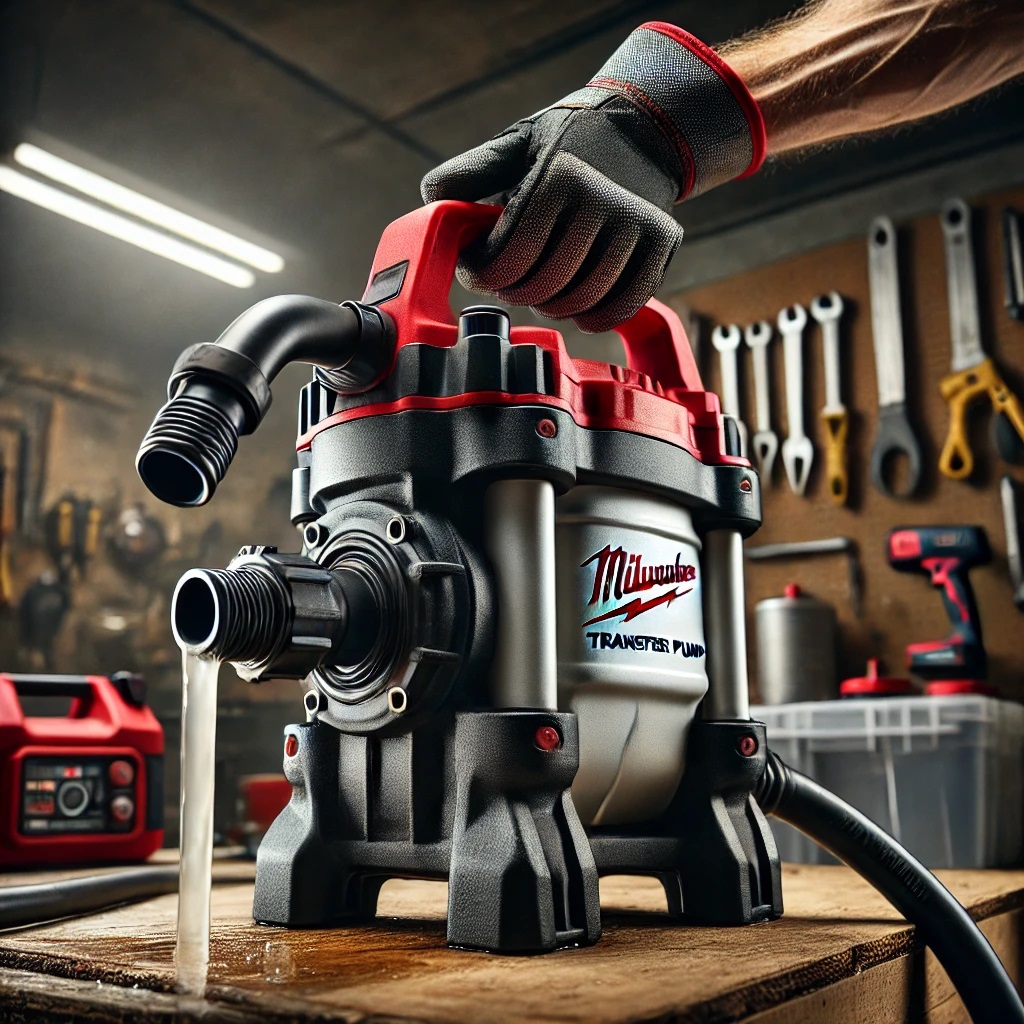
Introduction
Milwaukee transfer pumps are highly efficient tools designed to move large volumes of water swiftly and with minimal hassle. These pumps are often cordless, making them convenient for outdoor or remote locations without electricity. With a lightweight and portable design, they’re ideal for both professionals and homeowners dealing with flooded basements, draining pools, or moving water from one location to another.
Benefits of Using a Milwaukee Transfer Pump
- Cordless Convenience: Most Milwaukee transfer pumps run on rechargeable batteries, eliminating the need for power outlets.
- High Water Flow: These pumps can move up to 480 gallons of water per hour, making them perfect for fast water removal.
- Durability: Built to withstand harsh conditions, Milwaukee transfer pumps are crafted from high-quality materials for long-lasting use.
- Portability: The compact design allows easy transportation and operation in various locations.
Step-by-Step Guide on How to Use a Milwaukee Transfer Pump
1. Prepare the Pump and Area
Before operating the pump, ensure the area you’re working in is free of obstacles and debris. Select the right hoses and attachments for your task—Milwaukee pumps usually work with standard garden hoses.
- Check the Battery: Ensure the pump is fully charged or connected to a power source.
- Select Proper Hoses: Use high-quality hoses compatible with your Milwaukee transfer pump to prevent leakage or loss of pressure.
2. Attach the Hoses
- Input Hose: Connect the hose to the inlet side of the pump. This hose will draw water from the source (e.g., a flooded basement, pool, or pond).
- Output Hose: Attach the output hose to the outlet side of the pump, which will direct the water to its desired location (e.g., a drain or another container). Ensure that the connections are secure to prevent leaks.
3. Position the Pump and Hoses Correctly
Position the pump on a stable, flat surface. Ensure that the input hose is fully submerged in the water you need to transfer and that the output hose is placed correctly to avoid flooding in unwanted areas.
4. Prime the Pump (If Necessary)
Some models may require priming before use. Check your manual to see if your Milwaukee pump needs priming. If so, pour a small amount of water into the inlet to help the pump create the necessary suction.
5. Turn on the Pump
Once everything is set up, turn on the pump using the switch or trigger mechanism. Milwaukee pumps typically have simple, user-friendly controls.
- Monitor the water flow to ensure it’s functioning properly. If water isn’t moving or the flow seems weak, check the hose connections for leaks or blockages.
6. Monitor the Pumping Process
Keep an eye on the pump during operation to ensure it’s working smoothly. Most Milwaukee transfer pumps can run continuously for a reasonable period but always monitor the battery life if using a cordless model.
- Check for Overheating: If the pump feels too hot, give it a rest to cool down.
7. Turn Off the Pump and Detach Hoses
After the water has been successfully transferred, turn off the pump and detach the hoses carefully. It’s best to store the hoses properly to avoid any wear or tear.
8. Clean and Store the Pump
Clean the pump by removing any debris or buildup that might have accumulated during operation. Store the pump in a cool, dry place to ensure it remains in good condition for future use.
Tips for Optimal Performance
- Use Proper Hoses: Always use high-quality hoses that are designed to handle the water pressure and volume.
- Avoid Pumping Debris: Transfer only clear water, or ensure that your pump has a filter if working with slightly dirty water.
- Monitor Battery Life: If you’re using a cordless model, always keep an extra charged battery on hand to avoid interruptions.
- Keep the Pump Clean: Regularly clean the pump to avoid clogging and ensure smooth operation.
- Check for Leaks: Make sure all connections are tight and leak-free before turning on the pump.
Conclusion
The Milwaukee transfer pump is an indispensable tool for anyone looking to efficiently move water from one place to another. With its powerful motor, portable design, and ease of use, this pump is perfect for both small household tasks and larger professional projects. By following the steps outlined above, you can ensure your Milwaukee transfer pump operates at peak performance every time.
FAQs about Milwaukee Transfer Pumps
1. What kind of water can a Milwaukee transfer pump handle?
Milwaukee transfer pumps are designed for clean or slightly dirty water. Avoid using them with highly contaminated or debris-filled water unless the pump has a filter designed for such use.
2. How long can I run the pump continuously?
Most Milwaukee transfer pumps can operate continuously for extended periods but should be monitored for overheating. Always check the battery life if using a cordless model.
3. Can I use a Milwaukee transfer pump to drain a pool?
Yes, Milwaukee transfer pumps are powerful enough to drain large volumes of water, making them ideal for tasks like draining pools, hot tubs, and flooded areas.
4. What’s the maximum water flow rate of the pump?
Milwaukee transfer pumps can move up to 480 gallons of water per hour, depending on the model and setup.
5. Do I need any special attachments for the hoses?
In most cases, Milwaukee transfer pumps are compatible with standard garden hoses, but it’s important to check the specifications of your particular model to ensure proper fit.
6. How do I store the pump after use?
Clean the pump to remove any debris or buildup, and store it in a cool, dry place. Detach the hoses and store them separately to prevent damage.
